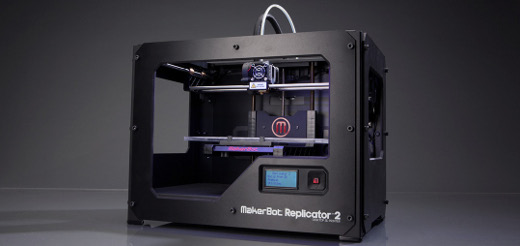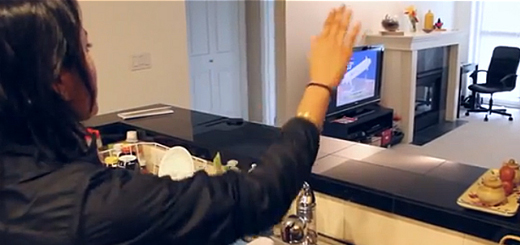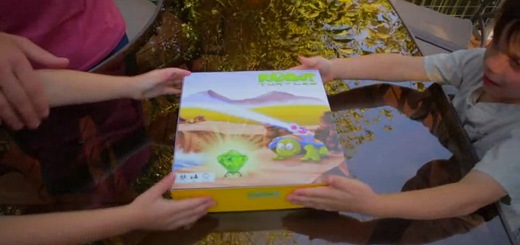Yujin Robot finds success through partnerships
South Korea-based Yujin Robot popped onto the radars of many robot enthusiasts recently thanks to its contribution to the TurtleBot 2: a new mobile base called Kobuki that replaces the iRobot Create used in the original TurtleBot.
For those who aren’t familiar with the TurtleBot, it looks like a dorm-room TV stand on wheels, but it’s actually a clever combination of off-the-shelf components that together form an affordable open-source development platform on which students, researchers and hobbyists can experiment with ROS (Robot Operating System) applications.
Kobuki represents a collaboration between Yujin and Willow Garage, the company that conceived the TurtleBot, as well as the open-source community behind the robot kit. It’s a typical example of the active approach Yujin takes to forming partnerships, a skill that Sam Park, Yujin vice president and chief technology officer, says is essential for any company in today’s robotics industry.
“If you count the number of technologies associated with a robot, it can be easily more than 200,” he notes. “Meaning you can’t develop all of those technologies — it’s impossible.”
Outside expertise
Yujin was founded in 1988 when CEO Kyung-Chul Shin was earning his doctorate in robotics at the University of Michigan Department of Mechanical Engineering. After graduation he worked at Samsung Aeronautics for two years before leaving to focus on Yujin, which has gone on to produce factory automation, cleaning robots, educational robots, military field robots and more.
Yujin’s varied product line serves numerous distinct markets, but the company recognizes that its expertise is in building robots, not health care or education or warfare. So, to supplement its manufacturing and design strengths, it often partners with outside organizations.
“In the case of hospital or service-based robots, we can’t do the business by ourselves because that’s not our specialty,” Park says. “So we have to have someone who is working together with us.”
Take, for instance, the company’s successful educational robot iRobi, which is currently being used by more than 2,000 kindergarten classes. The robot features a touch screen on its belly that can display a wide variety of content. In a home, that could be weather information or photos or games. In a school, it’s often educational content.
Creating that kind of material is not something Yujin is equipped to do, so the company works with universities and other educational companies to develop it. Additionally, Yujin works with an outside sales company that specializes in educational distribution to sell iRobi.
Teaming on research
Beyond content and distribution, Yujin also partners with outside organizations to conduct research.
Yujin is involved in the growing elder care robotics space as a hardware manufacturer, but to test the product, the company is working with a team in New Zealand that has health care expertise as well as an infrastructure to research human-robot interaction.
Yujin provides a robot platform for a large-scale study managed by UniServices, the company that helps commercialize The University of Auckland’s intellectual property. For more than four years, they have worked together on the project, with a university-based team developing applications and use cases for the robots.
The study is being conducted at an elder care facility with about 600 elderly residents and 400 caregivers. The research team includes a robotics professor, a medical doctor, nurses and psychologists.
Currently, the facility’s caregivers face a lot of repetitive tasks. Elderly residents often repeat the same questions and must be frequently reminded to take their medications. The goal of the project is to delegate those types of simple tasks to a robot and develop a business model to sell the robots as a system to other countries like the U.S. If the project is successful, it will provide a market for Yujin’s robots that the company could not have developed on its own.
“The business model is not just like simple business home appliances, where you just make it and you sell it on the market,” Park says. “In this area we have to have a partner who knows better than we do in that area.”
Partnering with users
Today, Yujin’s robots are used for all kinds of purposes the company never imagined. That’s because they’ve partnered with another group — the users.
Yujin’s educational robots are surrounded by both an online and an offline community. The offline community is a monthly training session for teachers hosted by Yujin. The online community is a virtual space where teachers exchange ideas among one another. Yujin built tools that allow teachers to create content for the robots, which the teachers share along with lesson plans and suggestions. Those ideas, in turn, help Yujin update the robot to better meet classroom needs.
That kind of community did not seem likely when the robots were first introduced. Young Jae Kim, Yujin’s executive director of sales and marketing, said when schools first started using the company’s robots in the classroom, principals accepted that robots were a good tool for education, but teachers did not. They were nervous the robots were going to take their jobs.
However, the eventual adoption of the robots was not unlike what happened shortly after the year 2000, when the South Korean government starting pushing the use of computers in the classroom. In the beginning, teachers were reluctant to use the PCs, concerned that they would eliminate the “human touch” from education. That resistance quickly faded, and Kim says teachers have likewise concluded that they can work together with robots to be more effective.
Once teachers accepted their autonomous assistants, they started coming up with imaginative uses for the robots that Yujin hadn’t anticipated. After lunch in some classrooms, students go to the robots to show that they’ve cleaned their teeth. The robot takes a picture and uploads it to a server parents can access. Teachers have also programmed robots to recognize students and sing to them on their birthdays.
“It’s all their idea, not our idea,” says Park.
Future plans
Yujin’s partnerships have helped magnify the impact of the relatively small company, which currently has 115 employees. In addition to the examples cited above, a partnership with the Korean government allowed the company to roll out its educational robots. A partnership with Phillips on a Phillips-branded robot vacuum helped expand their reach into new markets. Moving forward, Park says Yujin is always trying to find partners that can help the company seize on business opportunities.
The biggest short-term opportunities the company sees are its cleaning robot and telepresence, which Park says can be useful in either the office or the home. Slightly farther out, within five years, Park sees elder care service robots as a very big area.
The biggest problem the company sees for widespread robot adoption is cost.
To help combat the problem, Yujin is currently working to pull out the functions of a robot that are already widely available in the home or office. The idea is that by leveraging existing infrastructure, like smartphones or audio systems or the Internet, they can reduce robot components and, in turn, cost. For example, a smartphone already has all the technology needed to process audio commands, so by using the phone to relay instructions to the robot, it eliminates the need to include voice recognition in the robot itself.
Ultimately, Yujin wants to create intelligent robots that provide both physical and mental benefits for humans, and the company will continue to partner with organizations both inside and outside the robotics industry as it works toward that goal.
“The reason we started the cleaning robot business is because at the moment the cleaning robot is the application that we can give the practical benefit to the users,” Park says. “But our eventual goal is not just that area but also we are trying to provide value where the user can get more benefit. Not just practical work but more mental benefit, like the educational robot or the elderly care service or autistic children. That is a more long-term goal that we are working on right now, but we are quite positive about the fact that there is a business opportunity there.”
[ photo courtesy of Yujin Robot ]



